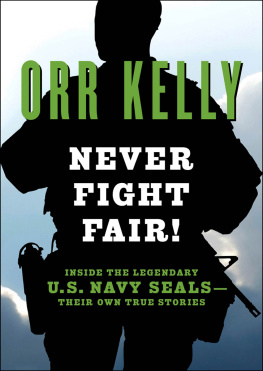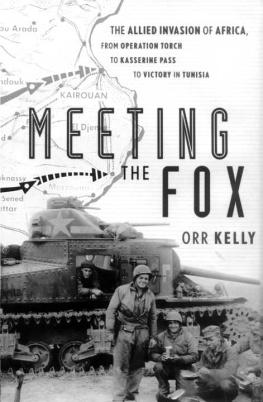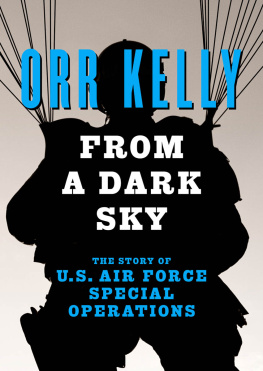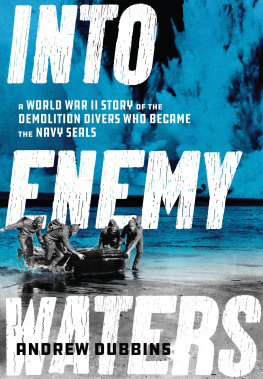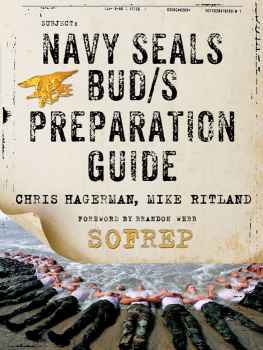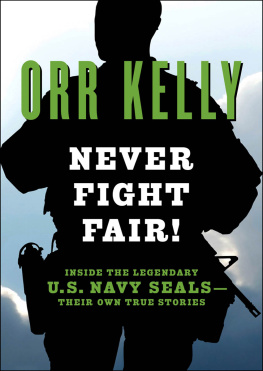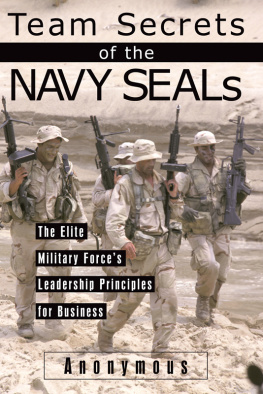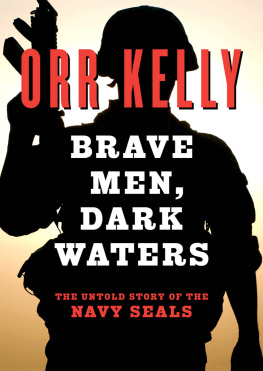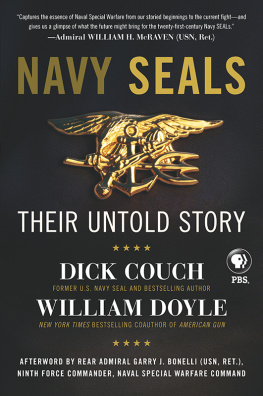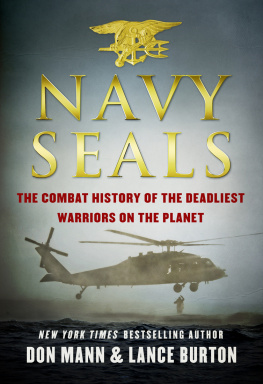Never Fight Fair!
Inside the Legendary U. S. Navy SEALsTheir Own True Stories
Orr Kelly

For the brave men who go where others dare not go
and do what others dare not do and for those among
them who have given their lives for their country.
PREFACE
When I began research on Brave Men, Dark Waters, my history of navy special warfarethe frogmenI naively gave the book the subtitle The Untold Story of the Navy SEALs.
As I quickly learned, there is no single untold story of the SEALs or of their predecessors. Instead, there are many more stories than there are frogmen.
You cannot devote your career to swimming onto enemy beaches, climbing in and out of submarines under water, navigating through dark seas in tiny SEAL delivery vehicles (SDV), or jumping out of airplanes into the dark and cold six or eight miles in the air without having some stories to tell.
Often, what SEALs do in training or in exercises is just as challenging and almost as dangerous as what they do in combat. It will be difficult for anyone to read the chapter, A World-Class Swim, describing going in and out of a submarine through the torpedo tubes, or Dead Before Sunrise, in which one of the survivors describes being trapped underwater in a wrecked SDV, without getting a severe, if vicarious, case of claustrophobia.
Many stories still remain untold except perhaps when frogmen gather and exchange reminiscences among themselves. Some of them are stories men would rather forget or have deliberately held in. Many of them are classified secret and will remain that way. Sometimes, it is simply that no one asks.
These, then, are some of the stories SEALs tell. I met with many of them with my tape recorder running. I then transcribed the tapes and edited the transcripts into the stories that appear in this volume. In many cases, those with whom I spoke turned out to be excellent storytellers. Their accounts flowed smoothly from tape to paper. In other cases, I edited the transcripts to make the stories easier for the reader to follow. In some cases, several men gave slightly different versions of the same event. In every case these are the words of the men themselves, although I have limited the degree of profanity and obscenity to about the level you might read in your daily newspaper.
In a few chapters, I have not used the names of those who spoke with me. In other cases, in fairness, I have left out the names of some of those referred to critically by those telling the stories. If there is hyperbole in the telling of these stories, I am sure the reader will recognize it as such.
SEALs, like members of any military organization, use many acronyms in talking about their work. I have inserted parenthetical explanations for terms and phrases that may not be familiar to the reader the first time they are used and have also provided a glossary of terms.
For those readers not familiar with the history of naval special warfare, it should be noted that the American frogmen first operated in World War II. A training base was set up at Fort Pierce, Florida, in 1943 to train naval combat demolition units (NCDU) to clear obstacles during the Normandy invasion in Europe, and many of those men died in the operation in June 1944. At Omaha Beach, 31 died and 60 more were wounded, 52 percent of the 175 men involved. At Utah Beach, the toll was much lower4 killed and 11 wounded.
Many of those trained at Fort Pierce were sent to the Pacific, where they went through another training session in a base on the Hawaiian island of Maui. Known as underwater demolition teams (UDT), they paved the way as American forces made their island-hopping way toward Japan. As noted in chapter 1, a small group of men was assigned to work under Gen. Douglas MacArthur in the southwest Pacific and they continued to use the NCDU designation. Also considered part of the frogman fraternity are those who served in the World War II Scouts and Raiders, with a mobile support team or special boat unit, in a SEAL delivery vehicle team, or as part of a naval special warfare staff or unit.
The SEALs (for sea, air, land) were formed from the UDT veterans in 1962. They were trained not so much for clearing obstacles along the shoreline, the specialty of the UDT units, as for land combat. The SEALs almost immediately became involved in what was then a small-scale counterinsurgency war in Vietnam and remained for a decade as the American role grew into a major involvement.
In 1983, the distinction between the work of the UDT units and the SEALs had become so slight that the underwater demolition teams were converted into SEAL teams.
The SEAL headquarters is now in Coronado, California, with teams based there and at Little Creek and Dam Neck, Virginia. They routinely operate overseas, often in exercises with special operations forces of other nations. The Naval Special Warfare Command is a part of the larger U.S. Special Operations Command, based at MacDill Air Force Base, Florida.
Those interviewed for this book, with the few exceptions noted above, are identified as their stories are introduced. I am grateful to all of them for taking the time to share their stories with me and with my readers.
I would also like to thank those who have been helpful in getting me together with other SEALs: Robert P. Clark and Thomas Hawkins in Virginia Beach, Virginia; Norman Olson in Panama City, Florida; and Maynard Weyers in Alexandria, Virginia. Thanks are also due to RAdm. Raymond C. Smith Jr., commander of the Naval Special Warfare Command; his deputy, Capt. Timothy Holden; Comdr. Glen King, director of public affairs for the command; and especially his stalwart aide, JO1 Mike Hayden.
I am especially thankful to Capt. Ronald E. Yeaw, who saved the records kept by the SEAL team TWO platoons in Vietnam just as they were about to be burned and permitted me to use them to establish dates of operations and the names of those involved. Unfortunately, the similar records kept by the SEAL Team ONE platoons were apparently discarded during a housecleaning at Coronado some years ago.
Maynard Weyers, who retired as a captain after serving as commodore of Naval Special Warfare Command Group Two, in Little Creek, Virginia, and Comdr. James Eugene Gene Wardrobe, a member of the staff at Coronado, read the manuscript of the book, double-checking for errors, and I am grateful for their help.
This book would not have been possible without the patient understanding of my wife, Mary; the guidance provided by my agent, Mike Hamilburg, and the professional expertise of my editor, Bob Tate, and his colleagues at Presidio Press.
INTRODUCTION
SEALs: What Makes Them Tick?
The idea for the title for this volumeNever Fight Fair!came to me as I was reading comments by several SEALs in Full Mission Profile, the professional bulletin of Naval Special Warfare. In a list of operator principles, Lt. Comdr. T. L. Bosiljevac, then executive officer of SEAL Team EIGHT, wrote, There is no such thing as a fair fight. Never plan a fair operation. And in another issue, Comdr. Larry W. Simmons, then commander of SEAL Team FIVE, wrote, Be SNEAKY, STEALTHY and do the UNEXPECTED.
Because SEALs often operate in units as small as half a dozen men, and sometimes smaller, they must always plan to have the advantage against any adversary. If the enemy expects attack tomorrow, hit him tonight. If he expects you to come by sea, arrive by parachute. If he watches for you in a helicopter, arrive as a tourist in an airliner. If he expects hand-to-hand combat or a knife fight, shoot him. If he expects you to fight by some set of rules, throw the rule book away.
Next page
